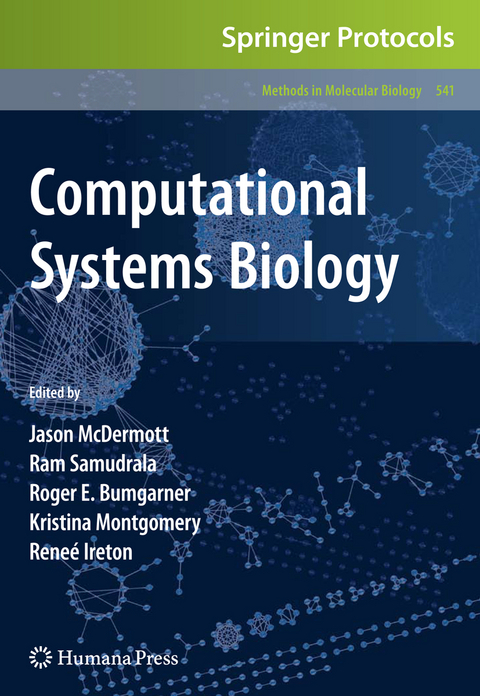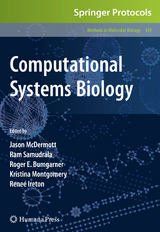Computational Systems Biology
Humana Press Inc. (Verlag)
978-1-58829-905-5 (ISBN)
- Lieferbar (Termin unbekannt)
- Versandkostenfrei innerhalb Deutschlands
- Auch auf Rechnung
- Verfügbarkeit in der Filiale vor Ort prüfen
- Artikel merken
Network Components.- Identification of cis-Regulatory Elements in Gene Co-expression Networks Using A-GLAM.- Structure-Based Ab Initio Prediction of Transcription Factor–Binding Sites.- Inferring Protein–Protein Interactions from Multiple Protein Domain Combinations.- Prediction of Protein–Protein Interactions: A Study of the Co-evolution Model.- Computational Reconstruction of Protein–Protein Interaction Networks: Algorithms and Issues.- Prediction and Integration of Regulatory and Protein–Protein Interactions.- Detecting Hierarchical Modularity in Biological Networks.- Network Inference.- Methods to Reconstruct and Compare Transcriptional Regulatory Networks.- Learning Global Models of Transcriptional Regulatory Networks from Data.- Inferring Molecular Interactions Pathways from eQTL Data.- Methods for the Inference of Biological Pathways and Networks.- Network Dynamics.- Exploring Pathways from Gene Co-expression to Network Dynamics.- Network Dynamics.- Kinetic Modeling of Biological Systems.- Guidance for Data Collection and Computational Modelling of Regulatory Networks.- Function and Evolutionary Systems Biology.- A Maximum Likelihood Method for Reconstruction of the Evolution of Eukaryotic Gene Structure.- Enzyme Function Prediction with Interpretable Models.- Using Evolutionary Information to Find Specificity-Determining and Co-evolving Residues.- Connecting Protein Interaction Data, Mutations, and Disease Using Bioinformatics.- Effects of Functional Bias on Supervised Learning of a Gene Network Model.- Computational Infrastructure for Systems Biology.- Comparing Algorithms for Clustering of Expression Data: How to Assess Gene Clusters.- The Bioverse API and Web Application.- Computational Representation of Biological Systems.- Biological NetworkInference and Analysis Using SEBINI and CABIN.
| Reihe/Serie | Methods in Molecular Biology ; 541 |
|---|---|
| Zusatzinfo | XVIII, 592 p. |
| Verlagsort | Totowa, NJ |
| Sprache | englisch |
| Maße | 193 x 260 mm |
| Themenwelt | Mathematik / Informatik ► Informatik ► Theorie / Studium |
| Informatik ► Weitere Themen ► Bioinformatik | |
| Naturwissenschaften ► Biologie ► Genetik / Molekularbiologie | |
| ISBN-10 | 1-58829-905-8 / 1588299058 |
| ISBN-13 | 978-1-58829-905-5 / 9781588299055 |
| Zustand | Neuware |
| Informationen gemäß Produktsicherheitsverordnung (GPSR) | |
| Haben Sie eine Frage zum Produkt? |
aus dem Bereich




